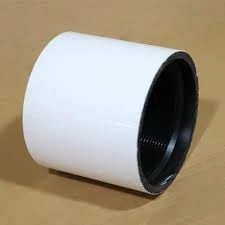- Afrikaans
- Albanian
- Amharic
- Arabic
- Armenian
- Azerbaijani
- Basque
- Belarusian
- Bengali
- Bosnian
- Bulgarian
- Catalan
- Cebuano
- Corsican
- Croatian
- Czech
- Danish
- Dutch
- English
- Esperanto
- Estonian
- Finnish
- French
- Frisian
- Galician
- Georgian
- German
- Greek
- Gujarati
- Haitian Creole
- hausa
- hawaiian
- Hebrew
- Hindi
- Miao
- Hungarian
- Icelandic
- igbo
- Indonesian
- irish
- Italian
- Japanese
- Javanese
- Kannada
- kazakh
- Khmer
- Rwandese
- Korean
- Kurdish
- Kyrgyz
- Lao
- Latin
- Latvian
- Lithuanian
- Luxembourgish
- Macedonian
- Malgashi
- Malay
- Malayalam
- Maltese
- Maori
- Marathi
- Mongolian
- Myanmar
- Nepali
- Norwegian
- Norwegian
- Occitan
- Pashto
- Persian
- Polish
- Portuguese
- Punjabi
- Romanian
- Russian
- Samoan
- Scottish Gaelic
- Serbian
- Sesotho
- Shona
- Sindhi
- Sinhala
- Slovak
- Slovenian
- Somali
- Spanish
- Sundanese
- Swahili
- Swedish
- Tagalog
- Tajik
- Tamil
- Tatar
- Telugu
- Thai
- Turkish
- Turkmen
- Ukrainian
- Urdu
- Uighur
- Uzbek
- Vietnamese
- Welsh
- Bantu
- Yiddish
- Yoruba
- Zulu
api 5ct casing coupling
Understanding API 5CT Casing Couplings An Overview
API 5CT is a vital specification published by the American Petroleum Institute, which outlines the requirements for casing and tubing used in the oil and natural gas industries. Among the multitude of components specified, casing couplings play a crucial role in the assembly and integrity of oil and gas wells. This article aims to explore the significance, specifications, and application of API 5CT casing couplings.
Understanding API 5CT Casing Couplings An Overview
API 5CT casing couplings come in various types and sizes to suit different drilling environments and conditions. They are typically produced from carbon steel, which is known for its strength and durability. The specification outlines several grades, including H40, J55, K55, N80, C90, and L80, among others. Each grade serves distinctive purposes, accommodating different temperature ranges, pressures, and corrosive environments.
api 5ct casing coupling

A central aspect of the API 5CT standard is the requirement for casing couplings to meet stringent mechanical properties. Key characteristics, such as yield strength and elongation, must align with specified parameters. These properties are essential as they determine how well a coupling can withstand the forces and loads imposed during drilling and production activities.
The couplings themselves can be classified into two primary types regular and premium. Regular couplings are cut from the same material as the casing pipe and are welded or screwed to connect the pipe sections. Premium couplings, however, are designed with enhanced features that provide superior sealing properties and resistance to environmental factors. Premium options might include advanced coatings or specialized threading systems, increasing their longevity and reliability in challenging conditions.
Installation of API 5CT casing couplings must adhere to best practices to ensure the integrity of the well. This includes precise alignment, proper torque during assembly, and addressing issues such as improper sealing or mismatched threads. Any errors in installation can lead to serious problems, including leaks or failures that may compromise the safety and economics of the drilling operation.
In conclusion, API 5CT casing couplings are an integral component in the oil and gas sector, serving as vital links in the casing string. Their proper specification and installation are crucial for maintaining the safety and efficiency of drilling operations. As the industry continues to evolve, advancements in material science and engineering are likely to drive innovations in casing coupling designs, further enhancing their performance and reliability. Understanding the intricacies of API 5CT casing couplings not only underscores their importance but also highlights the sophistication involved in modern drilling technologies.
-
Tubing Pup Joints: Essential Components for Oil and Gas OperationsNewsJul.10,2025
-
Pup Joints: Essential Components for Reliable Drilling OperationsNewsJul.10,2025
-
Pipe Couplings: Connecting Your World EfficientlyNewsJul.10,2025
-
Mastering Oilfield Operations with Quality Tubing and CasingNewsJul.10,2025
-
High-Quality Casing Couplings for Every NeedNewsJul.10,2025
-
Boost Your Drilling Efficiency with Premium Crossover Tools & Seating NipplesNewsJul.10,2025







